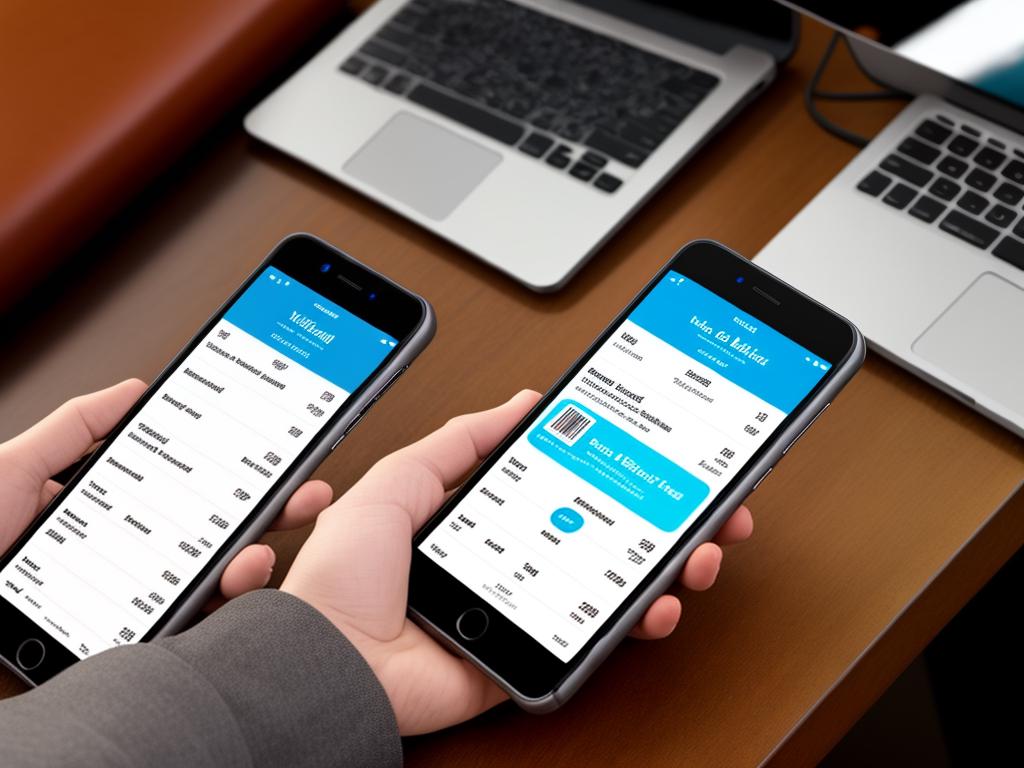In today’s digital age, the way we plan our travels has drastically changed. Gone are the days where we rely strictly on handwritten itineraries, travel agents, and physical maps to sort our trips. With the rise of smartphone technology, Trip Planner Apps have emerged as a pivotal tool for holiday makers and globe trotters. These applications not only simplify the travel planning process but also offer a more personalized and efficient experience – making them the go-to solution for all trip-related needs. This article will dive deep into the world of these revolutionizing apps, exploring what they are, their significance, a detailed comparison among the popular ones in the market, some handy tips to effectively use them and what the future holds for these travel companions.
1. Overview of Trip Planner Apps
Overview: Understanding Trip Planner Apps
Trip planner apps are digital tools used to assist travelers in organizing their journeys from start to finish. These applications streamline the process of travel planning by aggregating necessary components including transportation, accommodations, attractions, and dining options. By integrating the varied elements of a trip into one accessible platform, these apps can significantly reduce the time and stress associated with travel planning.
The typical functions of trip planner apps vary widely but some essential features are common across the varying platforms.
One such functional unit is itinerary generation. By inputting the necessary travel dates and destinations, users can automatically generate a day-to-day travel schedule. This can include everything from the precise times and locations for flights or other transportation to scheduled tours and recommended dining options. Itinerary generation simplifies travel planning by providing a holistic visualization of anyone’s trip and enables easy adjustments as needed.
Another central feature of these apps is their ability to handle booking accommodations. Rather than juggling multiple websites and apps, users can search for and reserve hotels, rentals, or other accommodations directly from the trip planning app. This can streamline the planning process and ensure that all reservations are easily accessible and stored in one location.
Additional features integrated into these apps can include guiding directions, similar to GPS systems, for getting around in unfamiliar destinations, as well as recommendations for attractions or dining based on a user’s preference or tailored to the specifics of their trip.
There is a diverse range of trip planner apps available, but a couple of key criteria can help users identify the one that’s right for them. Flexibility in making direct bookable actions and revising plans, ease of use, accessibility of comprehensive travel information and user reviews are some of the things to look for.
Exploring the Efficiency of Trip Planner Apps
Trip planner apps shine through their ability to bring together an extensive range of information and tasks related to trip planning under one user-friendly platform. They make itinerary generation a cinch, while also incorporating features like easy booking for accommodation and guided directions. These apps provide travelers with peace of mind as they centralize all critical travel information into one handy tool. This modern approach to travel planning offers convenience, eliminates stress, and caters to individual travel preferences.

2. The Importance of Using Trip Planning Apps
Unpacking the Features of Trip Planning Apps
These mobile applications, known as trip planning apps, are meticulously crafted to serve as a comprehensive guide for all travel requirements. Their importance extends beyond long-haul travels to even include local journeys. Their primary aim is to facilitate simplicity, convenience, and speed in any given travel planning process.
Here’s how they work. By utilizing these apps, travelers have the ability to manage a multitude of aspects pertaining to their travel. Everything from mapping out a route, reserving a flight or hotel room, setting alerts for departure times, identifying dining options, and even familiarizing oneself with local traditions and language can be easily accessed and controlled through a few simple taps on their mobile devices.
Why Use Trip Planning Apps
The value proposition of trip planning apps becomes clear once you consider the enormous load of tasks they help carry. In a fast-paced world, the ability to curate a comprehensive travel plan on a single platform saves significant time and energy compared to traditional methods.
Previously, travel planning involved various steps like researching destinations, tracking airline prices, making hotel reservations, understanding local transportation means, and syncing local attractions – each one requiring a significant chunk of time and patience. Trip planning apps have consolidated this extensive list into a less daunting and more seamless task.
Case in point: Google Trips allows you to manage details like flights and hotel reservations from your emails. You can also use it to plan your daily itineraries, add new places, and see them on a map.
Real-Time Updates and Cost-Effective Solutions
One key benefit offered by these apps is the provision of real-time updates. Travelers can receive instant notifications about flight schedules, weather conditions, traffic situations, or even unforeseen circumstances that might affect their plans, ensuring they always stay one step ahead.
Another significant advantage is the cost-effectiveness of trip planning apps. These apps often provide pricing options for various services including flights, accommodations, car rentals, and attraction tickets. This way, travelers can compare prices, find optimal deals, and manage their travel budget more effectively.
For instance, Hopper is a travel app that tracks flight prices and notifies you when it’s the best time to buy. It even offers a ‘Price Prediction’ feature, where it predicts the best time to purchase tickets to help travelers save money.
An Easy, Stress-Free Travel Experience
At their core, trip planning apps aim to transform the often-overwhelming process of travel planning into a simple, enjoyable experience. These digital tools efficiently handle the complex details associated with planning, allowing you to direct your energy towards appreciating the wonders of your travel destination instead. Trip planning apps are not one-size-fits-all; they cater to varying travel preferences and requirements, whether it’s a local or international trip, a solo adventure or a family holiday, an adrenaline-packed escapade or a tranquil retreat. The convenience and reliability these apps offer make them an indispensable travel companion within easy reach.
Given these advantages, the significance of trip planning apps should not be overlooked. They not only simplify the planning process, but also offer economically viable options, provide real-time updates, and enable a more enjoyable travel experience with reduced stress. In the current digital era, it’s safe to say that these apps have become an essential part of any travel journey.

3. Comparative Analysis of Popular Trip Planner Apps
Traveling has remarkably been simplified due to the rise of trip planner apps in the modern technological era. These ingenious tools assist you in building comprehensive itineraries, making sure you don’t miss any key attractions, and even in managing your travel budget effectively. To better understand their functionalities and unique features, let’s dive into an exploration of a few well-known trip planner apps: Google Trips, TripIt, and Roadtrippers.
Google Trips
Google Trips is a robust planning and organizing app. It provides an all-in-one platform to plan your vacation or business trip. The app organizes essential information like boarding passes, hotels, and car rentals in a centralized place for easy access. It can also recommend places to visit, things to do, and local restaurants based on user location. The app seamlessly integrates with other Google services, such as Google Maps, for easier navigation.
The app does not have a price—it’s free. However, users have pointed out the lack of live updates and notices regarding booking confirmation as shortfalls. As for customer reviews, the majority of users are satisfied with its simplicity and efficiency but regularly mention its reliability on a stable internet connection for optimal use.
TripIt
The TripIt app primarily focuses on itinerary service. The instant you make a booking, whether it’s a hotel, flight, car rental, or restaurant reservation, all you need to do is forward the email confirmation to TripIt. The app then organizes this data into an easy-to-read itinerary.
TripIt offers both free and paid versions. The Pro version, priced at $49 per year, includes real-time flight alerts, seat tracking, and a reward-program tracker. The general consensus among users is that the paid version’s offerings justify its price. In reviews, users have praised TripIt’s practicality and efficiency, while others find it lacks comprehensive trip planning resources like sites to see or activity suggestions.
Roadtrippers
Roadtrippers is the perfect companion app for those who love to hit the open road. Its primary strength lies in its ability to chart a course between your start and endpoint while suggesting interesting places to stop along the way. It lays out the whole road trip on an interactive map and offers instant reviews and photos of the suggested sites.
This app allows limited usage for free with up to 5 waypoints on a single trip, but to add more waypoints and access detailed maps, you will need a Plus membership, which comes at a cost of $29.99/year. Overall customer reviews are positive, with users appreciating its interactive map features. However, some users have expressed the need for better customer support.
Summary
When it comes to finding the right travel planner app, it truly is different strokes for different folks. The simplistic and free Google Trips may be suitable for one individual, while others may find greater value in the organization-centric TripIt, and Roadtrippers could be the ideal fit for those out for a thrilling road trip. Each app carries its strengths and weaknesses, making it crucial to identify what fits your travel planning needs perfectly.

4. Tips on How to Effectively Use Trip Planning Apps
Introduction to Travel Planning Apps
There’s been a surge in the popularity of trip planning apps as advancements in tech coincide with our growing reliance on digital conveniences. These ingenious apps, which centralize crucial elements such as bookings, itineraries, and maps, have revolutionized how we plan and undertake our journeys. To fully unleash the power of these digital allies, it’s crucial to know how to wield them effectively.
Booking Tickets Effectively on Trip Planning Apps
Most trip planning apps now have integrated ticket booking services for flights, trains, and local transport. To maximize savings, use in-app notifications or alerts for price changes. Input your desired destination and travel date, and the app will alert you when prices drop. Using the app’s ‘flexible dates’ feature can also help you find cheaper tickets around your intended travel date.
Using Trip Planning Apps for Accommodation and Local Transportation
Trip planning apps also let you book your accommodation ranging from hotels, resorts, or holiday homes to even makeshift camps or hostels. The app filters can help you select accommodation based on location, price, or type of property. Some apps even provide user reviews and ratings to ensure you make an informed decision.
Local transportation is another feature that trip planning apps cover comprehensively. They provide detailed information on local public transportation, including routes, timings, and fares. Alternatively, they can connect you with cab or bike rental services.
Effective Itinerary Planning Using Trip Planning Apps
Many apps now incorporate a comprehensive itinerary planner, which includes tourist attractions, local hotspots, restaurants, shopping centers, etc. You can customize these based on your interest areas – be it nature, art, history, food, or shopping.
Moreover, these apps also suggest the best route to cover these spots, ensuring optimum usage of your time. An efficient way to utilize this feature is by categorizing your itinerary days – for example, reserve one day for all historical spots, another day for nature parks or beaches, etc.
Packing Essentials and Other Features in Trip Planning Apps
Some sophisticated trip planning apps even assist you in packing. Based on your destination, duration of travel, and time of the year, they generate a custom packing list.
These apps also help you manage travel documents, provide trip reminders, language support, emergency contacts, information on local customs and traditions, health and safety advisories, etc., which can be very useful during your travel.
Seamless Travel Experiences with In-app Support and Customer Services
Reputable trip planning apps commonly offer round-the-clock customer service, having travel experts on hand to assist with any difficulties you might face while utilizing the app or during your journey. These professionals can help resolve any booking issues, provide accurate and quick information, or even attend to travel emergencies.
Taking full advantage of these fantastic features can mean the difference between a stressful or a stress-free travel planning experience. The more you delve into and utilize these apps, the more proficient you will become in exploiting their benefits to full potential. Because, at the end of the day, a thoroughly planned trip is often the most memorable.

5. The Future Trends of Trip Planner Apps
The Ever-Increasing Influence of Trip Planner Apps
Over the past decade, trip planner apps have made enormous strides, dramatically altering the way we travel. In our progressively interconnected era, these apps have transformed into necessary tools for the modern wanderer, offering invaluable benefits like real-time direction guidance, personal travel suggestions, accommodation reservation capabilities, and more. As technological advancements permeate through various sectors, trip planning apps are not being left behind, also experiencing considerable evolution.
Integration of Artificial Intelligence
In the near future, artificial intelligence (AI) will play a more prominent role in trip planner apps. AI and machine learning algorithms can analyze large amounts of traveler data, such as user browsing patterns, feedback, reviews, and history, to provide more personalized travel recommendations. From the most suitable accommodation option to the preferred mode of transportation, AI can enhance the accuracy of travel planning according to individual preferences.
Additionally, trip planner apps may integrate AI-powered chatbots for real-time customer support, answering queries, providing information, and even facilitating bookings. The chatbots could offer an improved user experience by providing immediate responses to user inquiries, thus reducing waiting time and improving customer satisfaction.
The Future of Augmented Reality and Virtual Reality in Travel Planning
Augmented Reality (AR) and Virtual Reality (VR) have the potential to take trip planner apps to a different level. VR could allow travelers to virtually visit a destination before they physically arrive, providing a more interactive and immersive travel planning experience. They could explore hotel rooms, visit attractions, and more – all from the comfort of their homes.
Similarly, AR could add another layer of interactivity to trip planning. Using AR, travelers could simply point their smartphones at a location to receive real-time information about nearby attractions, restaurants, or accommodations. It could also provide navigation assistance in real-time, making the travel experience seamless and more enjoyable.
Internet of Things (IoT) in Travel Planning
IoT technology could also revolutionize trip planner apps in the future. By connecting various devices and systems, IoT can ensure smoother, more coordinated, and personalized travel experiences. For example, IoT could sync the flight details from a trip planner app with a smart home system, ensuring that the lights and heating are turned off when the traveler leaves for the airport.
Summing Up: A New Era for Trip Planner Apps
In the future, trip planner apps are likely to become more intelligent, intuitive, and interactive. With the integration of cutting-edge technologies like AI, AR/VR, and IoT, these apps will offer an unprecedented level of personalization and convenience in travel planning. However, as these technologies become more prevalent, data security and privacy will also become increasingly important issues for app developers and users alike. As such, ensuring robust data protection measures will be crucial to maintaining users’ trust and facilitating the growth of these technologies in travel planning.

To sum up, as we become more dependent on digital solutions, the influence of trip planner apps in our travel experiences is anticipated to grow significantly. With their capability to streamline all aspects of the trip, they have revolutionized the very concept of travel planning. As technology evolves, we can expect these apps to become even more engaging and intelligent – perhaps seeing enhanced features powered by Artificial Intelligence or immersion through Virtual Reality. These enhancements have the potential to offer a far more interactive and personalized experience, making travel planning less of a chore and more of a joy. As we move forward, the integral role of trip planner apps in our expeditionary endeavors is undisputed and expected only to solidify further.
Need high quality content for your website? Look no further! Writio is an AI-powered content writer that creates custom articles, complete with images, and even tracks their Google rankings. This article was written by Writio.
